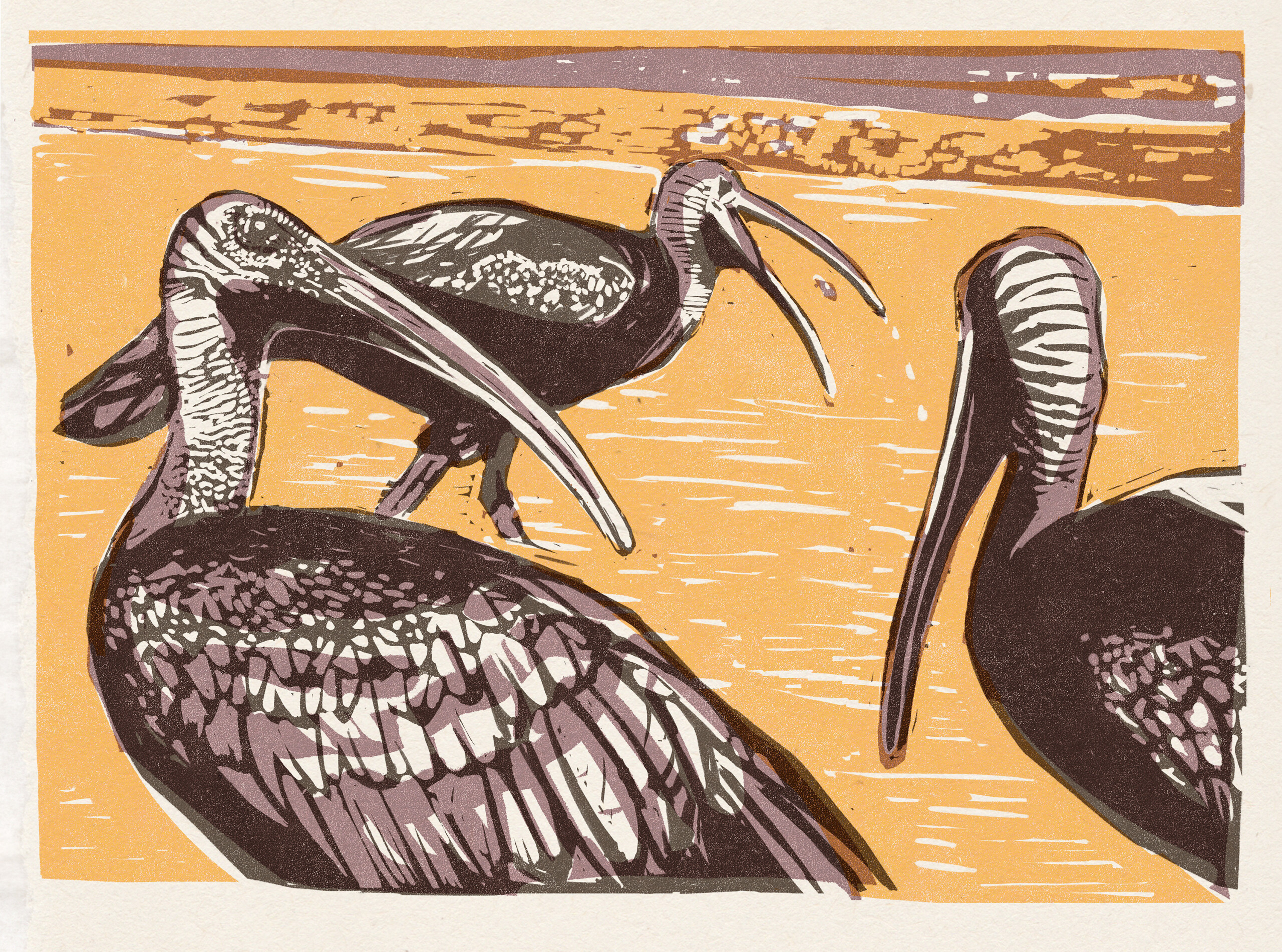To select the artwork prize for the BOU Early Professional Award, we ran an open competition for establishing and amateur artists. Here, Steve Dudley, one of the judges on our art competition panel, describes the judging process and how the panel settled on the winning entry.
Ornithology and art have long had a close relationship. Some of the more celebrated artists with close links to birdwatching communities of their day include Archibald Thorburn (1860–1935), whose work was used on the first RSPB Christmas card in 1899, Charles Tunnicliffe (1901–1979), whose work was often used on the cover of the RSPB’s member magazine, Birds, and Mike Warren (1938–) whose works have also featured on Birds covers.
Field ornithology in particular, and within this citizen participation in ornithological surveys, advanced tremendously with the advent of the modern-day field guide in the 1950s, since when we’ve seen a proliferation of bird artists illustrating guides to all regions of the world, which has been a key driver in stimulating peoples’ interest in birds globally. Quite simply, without high quality illustration, such books would not be credible or useful and as bird illustration advanced, so did the take-up of birdwatching as a hobby.
So, when, last year, the Awards Nominations Committee developed the Early Professional Award to recognise outstanding initial contributions to the field of ornithology, a piece of artwork as the prize for the award recipient seemed a very logical next step. But, rather than simply commission a piece of art, we decided to run an art competition. Entry was kept simple: produce an easily replicable piece of art depicting an ibis in any medium, and, in keeping with the early-career nature of the award, be open to early-career and non-professional artists from anywhere in the world.
To judge the art submissions, we formed a panel comprising artists Rachel Taylor and Darren Rees, two members of the Awards Nominations Committee, Rebecca Laidlaw and Lucy Wright (ANC and Panel Chair) and two bird art collectors, Tom Cadwallender and myself.
Qualifying submissions were received from nine artists from six countries and their digital images were circulated to our panel who independently ranked them. The ranks and each member’s supporting commentary were collated and circulated to all panel members ahead of our selection meeting. At the meeting all nine submissions were discussed in detail, but it was clear from members’ pre-assessment ranks and comments that we already had two stand-out entries – Jason Tyghe’s (UK) Glossy Ibis and Zosia Frankowska’s (Poland) Giant Ibis. Once the panel had discussed all other entries, to ensure we didn’t want to promote any of them to be further considered alongside these two, the panel teased out the eventual winner, Zosia Frankowska.

Zosia’s work is a 3-colour silkscreen print measuring 32 x 23 cm with each piece being hand-printed by the artist. Four of the six judges placed this piece in their top three and two ranked it #1 of the nine submissions.
The judges praised the composition and light of this work and felt that it had clear links to the BOU in both style and use of colours (the dominant colour being similar to a previous BOU ‘brand’ colour used for several decades up to 2009). The group of ibis also caught the community aspect of the BOU, suggestive of coming together to meet, a key component of the BOU’s work developing early-career ornithologists. The work also has flavours of previous works done for the BOU by Robert Gillmor (1936–2022), whose Sacred Ibis handprint is awarded to recipients of both the Godman-Salvin Prize and Janet Kear Union Medal and from which the BOU’s logo is taken, and Greg Poole (1960–2018), who illustrated a special supplement of IBIS on bird conservation in 1995.
Zosia receives a £1,000 commission to produce 10 pieces of her artwork for the BOU to use as the prize for the new Early Professional Award, with the first award expected to be made later this year.
Zosia Frankowska is a Warsaw-based graphic designer and illustrator. Since graduating in 2017 from the Academy of Fine Arts in Warsaw, from the Illustration and Book Design Faculties, she continues to work in both fields, introducing children to nature through educative books. Privately a devoted birdwatcher, she finds a lot of joy in focused observation of birds’ behaviour, later trying to capture their essence through detailed drawings.
On being notified, Zosia said “I feel very honoured and very happy that my work was singled out by the judges, whose work I appreciate so much. Since an ibis is a rare sight in Poland, the competition encouraged me to learn more about this charismatic family. The choice of which ibis to depict was not an easy one to make, and thanks to the competition I ended up with a series of drawings presenting different species, which I intend to finish in the near future.”
 Special mention goes to second place Jason Tyghe whose painting of two Glossy Ibis matched Zosia’s ranks with our panel with four judges placing it in their top three and two ranking it #1. Jason’s colourful painting featured two birds seen locally to him on Ynys Mon, Wales and the panel noted the Tunnicliffe influence of the work (Tunnicliffe himself was from Ynys Mon) and Jason’s attention to detail throughout the painting and the overall vibrancy of the piece.
Special mention goes to second place Jason Tyghe whose painting of two Glossy Ibis matched Zosia’s ranks with our panel with four judges placing it in their top three and two ranking it #1. Jason’s colourful painting featured two birds seen locally to him on Ynys Mon, Wales and the panel noted the Tunnicliffe influence of the work (Tunnicliffe himself was from Ynys Mon) and Jason’s attention to detail throughout the painting and the overall vibrancy of the piece.
Image credits
Giant Ibis © Zosia Frankowska
Glossy Ibis © Jason Tyghe




